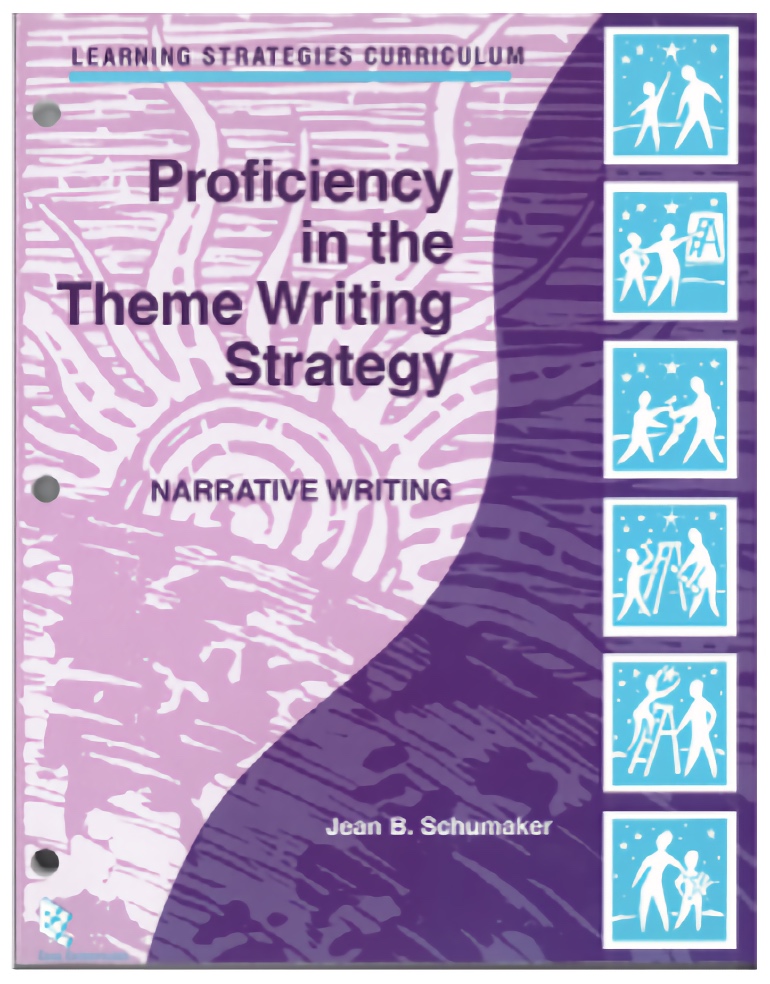Proficiency in the Theme Writing Strategy: Narrative Writing

All kinds of stories make our lives interesting. We read short stories and novels, and we watch TV shows and movies based on stories. There are nonfiction stories, like personal stories, biographies, autobiographies, historical stories, and journalistic stories. There are also fiction stories, some based on research and some just imaginative tales. At the heart of all the best stories is a structure that makes each story grab our interest and keep us glued to the content until the very end. This structure provides a foundation that enables students to learn to write all the types of stories. It is also the foundation for the new Proficiency in Theme Writing: Narrative Writing program (Schumaker, 2018).
Basic Structure of the Narrative Writing Program
The basic structure that provides the foundation for the new Narrative Writing Program involves several elements. First, the introduction includes a description of the characters and setting for the story. It also includes beginning events that grab the readers’ interest and start the story. Next, the rising action involves events that introduce a problem or a conflict and that build suspense. This suspense makes the reader wonder whether the main character(s) can solve the problem. At some point in the story, a crisis arises that makes the main character(s) decide to act to solve the problem. This forms the climax of the story. Next, through a series of falling-action events, the main character(s) solve the problem. Finally, the conclusion of the story shows what happens after the problem has been solved. Obviously, stories can be more complex than this basic structure. They can include several characters who each have their own plot lines and go through all the parts of a story, and there can be flashbacks and plot twists. Nevertheless, this basic structure is the structure that is taught initially in the Narrative Writing Program; enrichment instruction can follow once students have learned to create the basic structure. Thus, at the beginning of the Narrative Writing Program, students are taught this basic structure for stories and the vocabulary associated with the various parts of the structure.
Author: Jean B. Schumaker
Publication Info.: This product is published by Edge Enterprises, Inc.
Please note that professional development, coaching, and infrastructure support are essential components to effective implementation of SIM instructional tools and interventions. It is highly recommended that you work with a SIM professional developer. See the SIM Event list for sessions or email simpd@ku.edu to learn more.